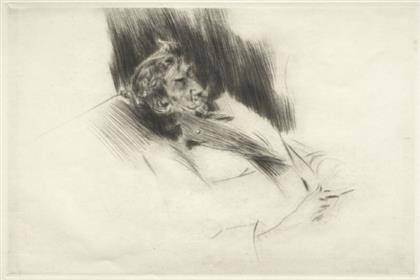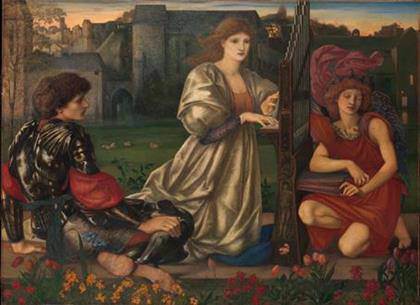
Carlo Bossoli
Balaklava, 1857
gouache with watercolor on paper laid down on canvas
sheet: 76.5 x 112.6 cm (30 1/8 x 44 5/16 in.)
National Gallery of Art, Washington, Florian Carr Fund

Giovanni Boldini
Whistler Asleep, 1897
drypoint
National Gallery of Art, Washington, Ailsa Mellon Bruce Fund
‘Italian Prints and Drawings, 1800–1925’ in Washington ‘From Neoclassicism to Futurism: Italian Prints and Drawings, 1800–1925’ —on view at the National Gallery of Art, Washington, from September 1, 2014 to February 1, 2015- introduces visitors to a period that is largely neglected by art history.]]>
Source: National Gallery of Art, Washington
“From Neoclassicism to Futurism: Italian Prints and Drawings, 1800–1925” features some 80 prints, drawings, and illustrated books by 53 artists ranging from works inspired by the ancient past to magnificent set designs, poetic landscapes, and striking approaches to non-representational art.
Filling three galleries, “From Neoclassicism to Futurism” spans Italy’s turbulent history, from Napoleonic rule to the splintering and reunification of the nation and its subsequent descent into fascism.
The first gallery features works that reflect the persistence and weight of tradition through the first half of the 19th century in engraved interpretations of old master paintings, drawings inspired by antique models, and theatre designs.
Works in the second gallery reveal a late but passionate embrace of Romanticism and an individualistic approach to art according to the geographic centers where it flourished: Turin, Milan, Rome, and Naples.
The final gallery features works by all the major figures in the Futurist movement, from its founder Filippo Tommaso Marinetti (1876–1944), to Umberto Boccioni (1882–1916) and Carlo Carrà (1881–1966), who all consciously rejected the past and celebrated the dawn of a new age. It also includes works by important precursors of this explicit modernism, such as works by Fattori and Telemaco Signorini (1835–1901), and other responses to the new age, like “Still Life with a Basket of Bread” (1921) by Giorgio Morandi (1890–1964).
Related content
Italian Altarpieces at the National Gallery of London (exhibition, 2011)
Follow us on:


